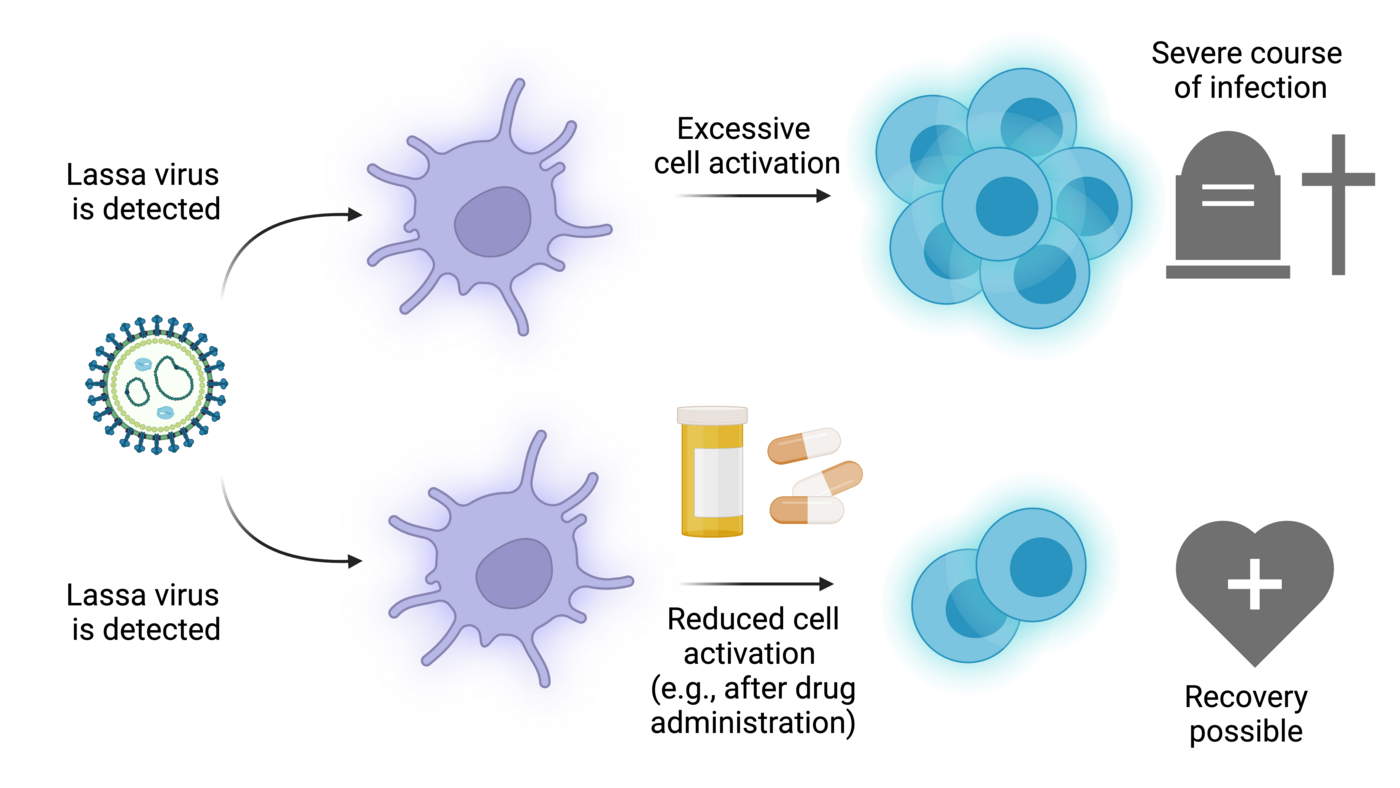Lassa haemorrhagic fever
How does the immune response work?
Every year, there are about 300,000 new cases of Lassa fever in West Africa, caused by the highly pathogenic Lassa virus, of which about 5,000 are fatal. Making the correct diagnosis is challenging because the first symptoms of the disease, such as throat inflammation, cough, chest and muscle pain, vomiting and diarrhea, often cannot be distinguished from other diseases such as typhoid fever or malaria. Furthermore, there are still no licensed vaccines or treatments for Lassa fever available. Among other things, because it is not yet known which factors of the human immune system play a role in the development of severe courses of the disease.
At the BNITM, a mouse model has been established that reflects the course of Lassa fever. It is used to examine different cell types of the immune system in order to better understand their role in the disease process at different times. In addition, it can be investigated whether immunomodulatory or antiviral drugs contribute to recovery.
Using this mouse model, it could be shown that the cells of the adaptive immune system are not adequately activated after a Lassa virus infection. An excessive as well as a too slow and weak immune response leads to a more severe course of the disease. In addition, it could be shown that the activation and excessive multiplication of immune cells is prevented by the administration of drugs, so that survival of the infection is possible. Based on these findings, it is possible to develop therapeutic approaches for humans.
Further information can be found in the following publications:
Possibilities for alternative methods can be found under alternativ Methods at BNITM.







